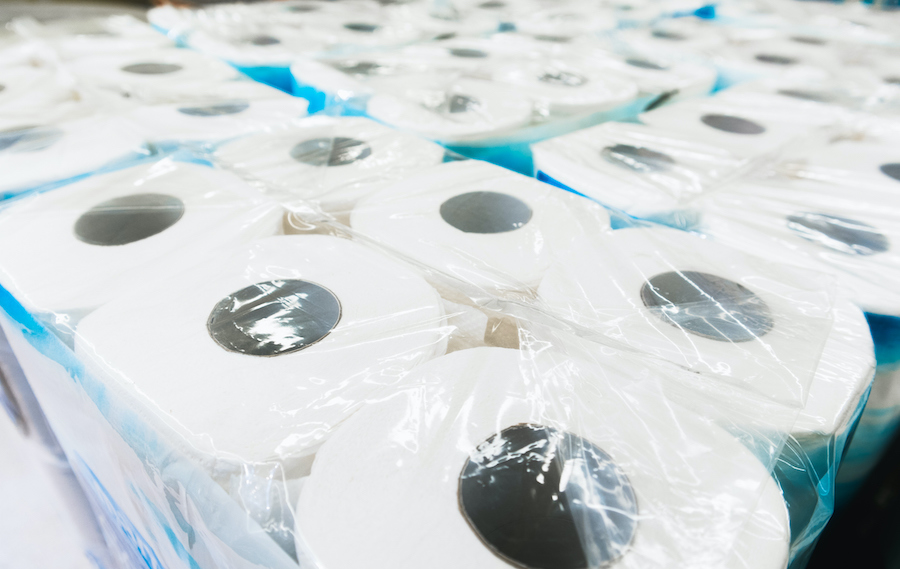Days before reporting earnings, P&G announced a dividend increase of 6%. The company has paid a dividend every year since 1890. On April 17, 2020, Procter & Gamble reported fiscal 2020 third quarter earnings (here). The firm reported ‘core’ earnings of $1.17 per share, better than consensus expectations of $1.13 and up 10.3% from 2019 Q3 of $1.06. Also, GAAP diluted net earnings were $1.12 per share (up 8% versus 2019 Q3 GAAP diluted earnings per share).
Aside: Why is there a difference between GAAP and ‘core’ earnings? GAAP, Generally Accepted Accounting Principles, includes everything that a company does in a reporting period. The itemized impact of large restructurings, asset sales, spin-offs, and non-cash balance sheet impairments and write-downs are all included in GAAP earnings. Companies use ‘core’, or, ‘reported’ earnings to adjust for items that the firm considers to be a one-off or sporadic occurrence. Both have advantages and disadvantages. Since GAAP includes all items, it can account for and show the effect of previously made decisions. For example, a balance sheet impairment or write-down essentially means that an asset is deemed not really worth the value the firm originally thought it was worth. In this way then, GAAP earnings can be informative about a poor investment decision or the impact of significant market or regulatory changes since the decision. Regarding the ongoing earnings power of a firm, non-GAAP ‘reported’ earnings may do a better job. Reported earnings adjust for one-off items and allow for easier comparisons across periods.
Net Sales
Net sales were up 5% vs. the previous year to $17.20 billion for the quarter. While foreign exchange reduced net sales by -2% overall, only the Grooming segment experienced an organic sales decline, -1% (‘organic’ excludes the impact of foreign exchange).
Beauty, the segment noted for driving much of the organic sales over the past several quarters, saw a paltry 1% organic bump in Q3 2020. According to P&G’s press release, Beauty related gains were offset by pandemic related disruptions causing double-digit declines in China.
The Fabric and Home Care segment drove organic growth of 10%, followed by a 9% jump in the Healthcare segment and 7% hike in Baby, Feminine & Family Care.
COVID-19 Effects
As the COVID-19 pandemic evolves and various governments mandate closures and restrictions around the globe, consumer buying habits have undoubtedly changed, at least temporarily. Preparing for the worst, consumers have been pantry loading and stocking non-perishable items in anticipation or fear of shortages.
Among the items consumers have been stocking are surface cleaning products, tissues, paper towels and toilet paper. Procter & Gamble’s cleaning and surface care products are organized under the Fabric and Home Care segment and paper towels, tissues and yes, toilet paper, are organized under the Baby, Feminine & Family Care segment. Considering the frequently depleted paper products aisle in the local grocery store, the Charmin bears must be doing quite well during this pandemic.
The company adjusted its fiscal 2020 “all-in” sales growth guidance from 4%-5% to 3%-4% citing foreign exchange headwinds and maintained its ‘organic’ sales forecast of 4%-5%.
Overall organic sales for the quarter came in at 6%, slightly above the organic sales range for the fiscal year. What remains to be seen is whether recent buying habits are temporary or permanent. If the answer is temporary, then future demand has likely been “pulled” forward, boding for lower demand in future quarters as demand reverts to the mean. If permanent, then segment trends this quarter give us a glimpse into what may be expected going forward.
Disclosure: This material is provided by Schmitt Wealth Advisers for informational purposes only. It is not intended to serve as a substitute for personalized investment advice or as a recommendation or solicitation of any particular security, strategy or investment product. Opinions expressed by Schmitt Wealth Advisers are based on economic or market conditions at the time this material was written. Economies and markets fluctuate. Actual economic or market events may turn out differently than anticipated. Facts presented have been obtained from sources believed to be reliable. Schmitt Wealth Advisers, however, cannot guarantee the accuracy or completeness of such information. Past performance may not be indicative of future results.

